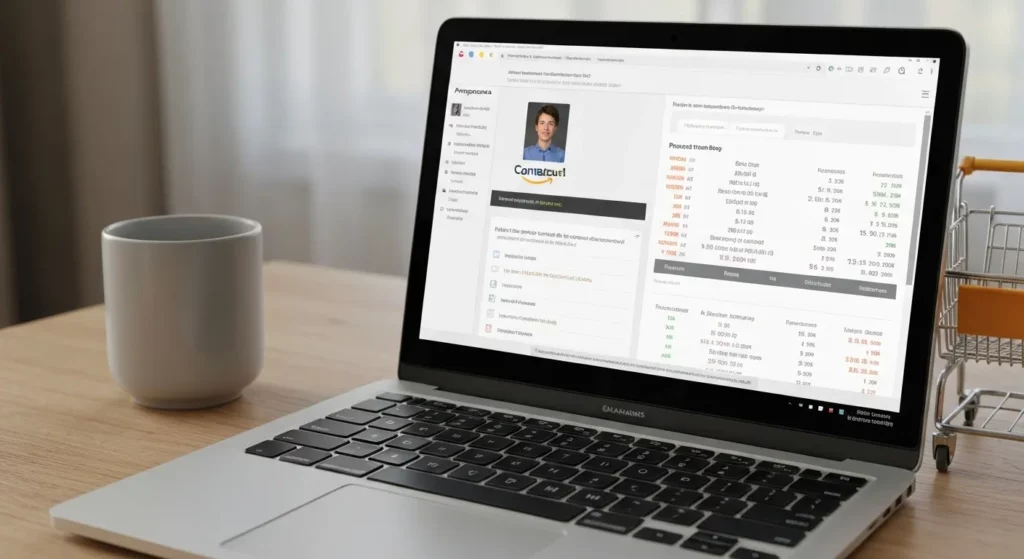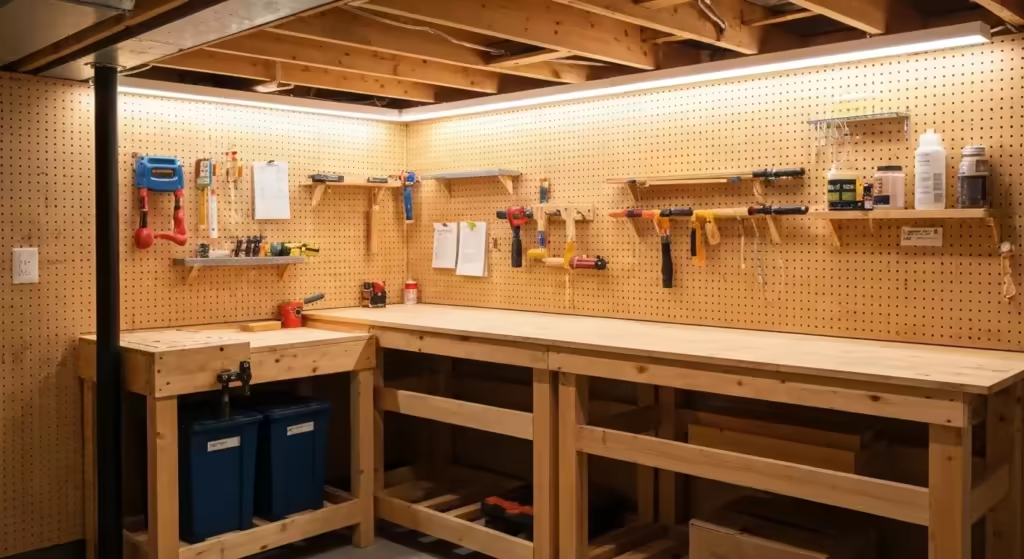I’ve always considered myself a careful person. I check the tire pressure on my car, I read the fine print on agreements, and I never leave the house without making sure the coffee pot is off. But for most of my life, that carefulness never quite extended to my shopping habits. I wasn’t extravagant, not by a long shot. I just… bought things when I needed them. Or, more accurately, when I thought I needed them.
This approach felt practical. It felt responsible. If the dishwasher broke, you bought a new one. If you needed a gift, you went to the store and bought it. The price was the price. My strategy was simple: find a reputable brand, find a model with good reviews, and pay what the tag said. It was a system that worked, or so I told myself, for decades.
The slow unraveling of that belief began not with a bang, but with a hum. A low, groaning hum that started in the heart of our kitchen and grew louder and more ominous with each passing day. Our refrigerator, a trusty behemoth that had served us faithfully for fifteen years, was dying.
The Wake-Up Call: My Painful $500 Mistake
There’s a special kind of stress that comes with a major appliance failure. It’s not just the cost; it’s the urgency. Every hour that passed, I imagined the contents of my freezer slowly turning into a lukewarm, inedible soup. There was no time for leisurely comparison shopping, or so I thought. Action was required.
I sprang into what I called my “sensible shopper” mode. I spent a full Saturday driving between three different big-box stores. I talked to salespeople, I measured the space in my kitchen three separate times, and I read consumer reviews on my phone while standing in the brightly lit aisles. I was doing my due diligence.
Finally, I found it. A beautiful, stainless-steel French door model. It was quiet, energy-efficient, and had a feature my wife loved—a special drawer with adjustable temperature controls. The price was steep: $1,799. I winced, but the salesman assured me it was a fair price for a model of this quality. It was a major, unplanned expense, but it was necessary. I handed over my credit card, scheduled the delivery, and felt a wave of relief wash over me. Problem solved.
The new refrigerator arrived two days later. It was magnificent. The hum was gone, replaced by a gentle, reassuring purr. My kitchen felt modern and new. I had handled the crisis. I was proud of myself.
That pride lasted exactly nine days.
It was a Sunday morning, and I was sitting at the kitchen table with my coffee, enjoying the quiet. I was flipping through the newspaper circulars, a weekend ritual I’d had for years. And then I saw it. An ad for the very same store where I’d bought my refrigerator. And there, on the front page, was my beautiful, magnificent, brand-new refrigerator. My exact model.
The ad screamed in bold, red letters: “PRESIDENT’S DAY PRE-SALE EVENT!”
The price listed below the picture made my stomach drop. $1,299.
I stared at the ad, my coffee growing cold. I did the math in my head, then did it again because I couldn’t believe it. Five hundred dollars. I had paid five hundred dollars more than I needed to, simply because my old fridge decided to die nine days too early.
It wasn’t just the money, though the money certainly stung. It was the feeling of being a fool. I had done my research, I had negotiated, I had been a “careful shopper.” But in the end, I had been outsmarted by a calendar. My carefulness was purely reactive. I had played the game completely on the store’s terms, and I had lost. That feeling of powerlessness, of having my hard-earned money just vanish because of bad timing, sat with me for weeks. It was a bitter lesson, and I knew right then that something in my approach had to change. I just had no idea what.
A Skeptic’s First Steps into a New World
The answer, as it often does, came from the younger generation. My grandson, Michael, was over for dinner a few weeks later. He’s a good kid, deep into computers and video games—a world I mostly nod and smile about without fully understanding. I was still grumbling about the refrigerator, recounting the story for what must have been the tenth time.
“You should have set a price alert, Grandpa,” he said, not looking up from his phone.
“A what?” I asked.
“A price alert. Or a price tracker. You just tell the computer what you want to buy and what price you want to pay, and it emails you when it goes on sale.” He said it so casually, as if he were explaining how to toast bread.
My immediate reaction was dismissal. My mind conjured images of complicated software, endless pop-up ads, and giving my personal information away to some mysterious internet company. “Oh, that sounds too complicated,” I said, waving a hand dismissively. “That’s for you techy people. I’m fine with the newspaper flyers.”
But even as I said it, the memory of that $500 loss twisted in my gut. Was I really “fine”?
Michael must have sensed my hesitation. “It’s super easy, Grandpa. Seriously. There are websites and browser extensions. You find the thing you want on Amazon or whatever, click a button, and you’re done. It does all the work.”
The word that stuck with me was “work.” The thought of a computer doing the work—the constant, vigilant work of watching prices—was intriguing. My method involved a lot of work: driving, talking, comparing, worrying. And it had failed spectacularly. Maybe, just maybe, this new way was worth a look.
That evening, after Michael had gone home, I sat down at my desktop computer. I felt a little foolish, like I was trying to learn a foreign language at my age. I typed “online price alerts” into the search bar. The results were overwhelming. There were dozens of sites, apps, and extensions, all promising to be the ultimate savings tool.
I almost gave up right there. But the ghost of that $1,799 price tag pushed me forward. I decided to start small. I picked a website that looked simple and didn’t require me to download anything. Then, I needed a test subject. What was something I wanted but didn’t urgently need? My eyes landed on a book I’d been meaning to read—a new biography on Harry Truman. It was $28 on a major online bookstore. A fair price, but more than I liked to pay for a hardcover.
With a bit of fumbling, I copied the web address of the book’s page and pasted it into the price alert website’s search box. A little pop-up appeared. It showed the current price, $28, and a box that said, “Alert me when price drops below…”
This was the moment of truth. What was a good price? I thought about it. I decided I’d be happy to pay $20. I typed “20” into the box, entered my email address, and clicked “Set Alert.”
And that was it. Nothing happened. No confetti, no confirmation fanfare. For a moment, I was sure I’d done it wrong. But a simple message on the screen said, “Your alert is active.” I leaned back in my chair, deeply skeptical. It felt too simple to possibly work.
I forgot all about it. Life went on. Weeks passed. Then one Tuesday morning, an email popped into my inbox with the subject line: “Price Drop Alert!”
My heart gave a little flutter. I clicked it open. There it was, in plain black and white: The Truman biography was now on sale for $19.50.
It was only a saving of $8.50. It was not a life-changing amount of money. But the feeling… the feeling was incredible. I hadn’t scoured a single flyer. I hadn’t visited a single store. I hadn’t thought about that book once in three weeks. The deal had come to me. I felt a surge of triumph that was completely out of proportion to the amount I’d saved. I had set a trap, and the bargain had walked right into it. I clicked the link, bought the book, and felt as smart as a whip.
That tiny, eight-dollar victory was the beginning of everything. I was hooked.
From One Alert to a Personal Savings System
That first successful alert flipped a switch in my brain. I started to see shopping not as a series of urgent needs, but as a long game of patience and strategy. I realized that most of the things I buy aren’t immediate emergencies. Gifts, holiday supplies, clothes for the next season, even replacements for things that are getting old but haven’t broken yet—all of these could be planned for.
My next experiment was bigger. It was for that same grandson, Michael. His birthday was four months away, and he had been dropping not-so-subtle hints about a fancy new gaming headset. I knew the one he wanted; it was a specific brand and model that cost a wallet-clenching $149. My old self would have sighed, waited until the week before his birthday, and paid the full price.
But the new, alert-savvy me had a different plan. I went online, found the exact headset, and set up an alert. This time, I was more strategic. The price alert tool showed a history graph of the item’s price. I could see it had dropped to around $110 or $120 during previous sales events. So, I set my target price at $115. And then, I did the hardest part: I waited.
For two months, nothing happened. A part of me grew anxious. What if the sale never came? What if it was a new model that wouldn’t be discounted? I had to actively resist the urge to just go and buy it. I reminded myself that I still had plenty of time. This was a marathon, not a sprint.
Then, in early October, an email arrived. “Price Drop Alert!” The headset was on sale for $119.99 as part of an early holiday promotion. It wasn’t quite my $115 target, but it was close enough. A $30 savings for doing absolutely nothing but waiting. I bought it immediately, wrapped it, and hid it in my closet.
When Michael unwrapped that headset on his birthday, his eyes lit up. He was thrilled. And I felt a quiet, profound sense of satisfaction. I hadn’t just saved money; I had been a smart, prepared grandparent. I had given a wonderful gift without the last-minute stress or the feeling of being overcharged. This was a game-changer.
Building My “Someday” Lists
This success inspired me to create a more organized system. I realized that the key to making this work wasn’t just setting random alerts, but in planning ahead. Many online retailers have a “Wish List” or “Save for Later” feature. I started using these as my digital staging grounds.
I created several lists. One was “Gifts.” Throughout the year, if a family member mentioned something they wanted, I’d quietly find it online and add it to the list. My wife’s favorite perfume, my daughter’s preferred brand of running shoes, my son-in-law’s love for a particular brand of gourmet coffee. The list grew, becoming a repository of future gift ideas.
Another list was “Home & Garden.” On this list went things like new garden hoses, replacement filters for the furnace, a new set of bath towels. These were items I knew I would need eventually, but not tomorrow. Why pay full price when I could wait for the inevitable “White Sale” or “Spring Savings” event?
The third list was “My Hobbies.” As an avid birdwatcher, I was always eyeing a better pair of binoculars or a new field guide. As a woodworker, I kept a running list of router bits or specialty clamps I wanted. These were my “wants,” not my “needs,” and were the perfect candidates for this patient approach to **shopping with price drop tracking**.
About once a month, I’d spend maybe thirty minutes reviewing my lists. I’d take the items and plug them into my chosen price alert tool. It became a simple, easy-to-manage routine. This process of **setting up online price alerts** was no longer a chore, but a satisfying part of my financial management.
The Everyday Wins and the Power of Patience
While the big-ticket savings are exciting, the real magic of this system is in the small, consistent wins. The tools for **automatic deal notifications** became my silent, tireless assistants.
For example, my wife and I drink a specific brand of dark roast coffee beans. It’s not cheap. I set an alert for it on Amazon, with a target price 20% below the usual cost. About every two or three months, I get an email, and I buy three or four bags at once. The savings on each bag might only be $3, but over a year, that’s nearly $50 saved just on coffee, with zero effort on my part.
I do the same for printer ink, which feels like it costs its weight in gold. And for the specific brand of vitamins I take every day. These small, recurring purchases add up to a significant, steady stream of savings.
Of course, it’s not a perfect system. It requires a fundamental ingredient: patience. There have been times when an alert never triggered. I once set an alert for a specific high-end power drill I wanted, hoping for a 25% discount. The sale never came. After six months, my old drill finally gave up the ghost, and I had to buy the new one at nearly full price.
But here’s the crucial difference: I bought it with confidence. Because I had been tracking it, I knew for a fact that I wasn’t missing out on a better deal that had happened last week. The price alert system gave me peace of mind even when it didn’t save me money. It confirmed that the current price was, in fact, the going rate. It removed the guesswork and the potential for buyer’s remorse. That, in itself, is priceless.
The Real Return on Investment: More Than Just Money
Last year, out of curiosity, I decided to do some rough calculations. I went through my email archives and looked at all the price alert notifications I had acted on. The $30 on the headset, the $8 on the book, the cumulative savings on coffee, the $75 I saved on a new lawnmower during a flash sale, the $120 saved on a flight to visit my sister because I tracked the fare for a month before booking.
I stopped counting when I passed $800.
More than eight hundred dollars saved in a single year. And what had I done to earn it? I’d spent maybe a few hours, total, spread across 12 months, copying and pasting web links. It was the easiest, most passive money I had ever “made.”
Redefining “Lazy” as “Efficient”
This is why I call it my “lazy” way of saving. It’s a bit of a joke, of course. I’m not lazy. But I’ve learned to embrace a kind of strategic laziness. It’s the art of letting technology do the heavy lifting. It’s about front-loading the effort. You do the small task of setting up the alert once, and then you sit back and let your digital assistant watch the market for you 24/7.
My old method of shopping felt busy and productive, but it was incredibly inefficient. It was based on luck and timing. This new method is the opposite. It requires very little active work, but it is deeply efficient. It replaces frantic, stressful, last-minute deal-hunting with calm, patient, automated waiting.
This simple shift has given me something far more valuable than the $800 I saved. It has given me time and mental freedom. I no longer waste weekend afternoons wandering through stores. I don’t have that nagging voice in the back of my head asking, “Is this a good deal? Should I wait? What if it’s cheaper next week?”
The mental energy I used to spend on shopping anxiety is now freed up for things I truly enjoy. I spend more time in my workshop, more time in the garden, and more time reading the books I buy at a discount. That’s the real return on my investment.
A Shift in Mindset
Ultimately, this journey, which started with a frustratingly overpriced refrigerator, wasn’t just about adopting a new savings tool. It was about a fundamental shift in my relationship with money and consumption.
I went from being a reactive consumer, at the mercy of marketing calendars and urgent needs, to being a proactive planner. I feel like I’m in the driver’s seat now. I decide what I want to pay, and I have the patience to wait for the market to meet my price. It’s a feeling of control and competence that has spilled over into other areas of my financial life.
I’ve learned that being smart with money isn’t about depriving yourself. It’s about being intentional. It’s about knowing the difference between an urgent need and a patient want. And it’s about using the simple tools at our disposal to make our money work harder for us.
It’s funny to think that a simple email notification about a book sale could be so transformative. But it was. It was proof that I could learn a new trick, that I could adapt my old habits, and that I could beat the system—not by working harder, but by working smarter. It wasn’t about becoming a tech wizard or a digital native. It was about finding one small, simple change that gave me back control, peace of mind, and yes, hundreds of dollars every year.
And if I, a self-proclaimed skeptic who was still mourning a bad appliance purchase, can figure it out, believe me, anyone can.














